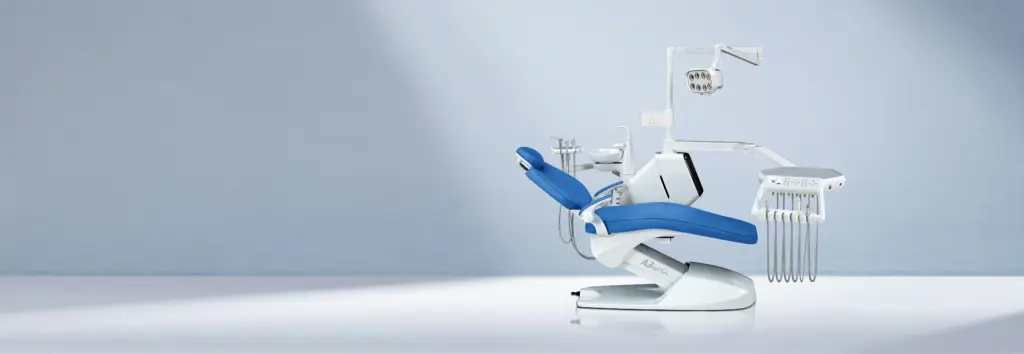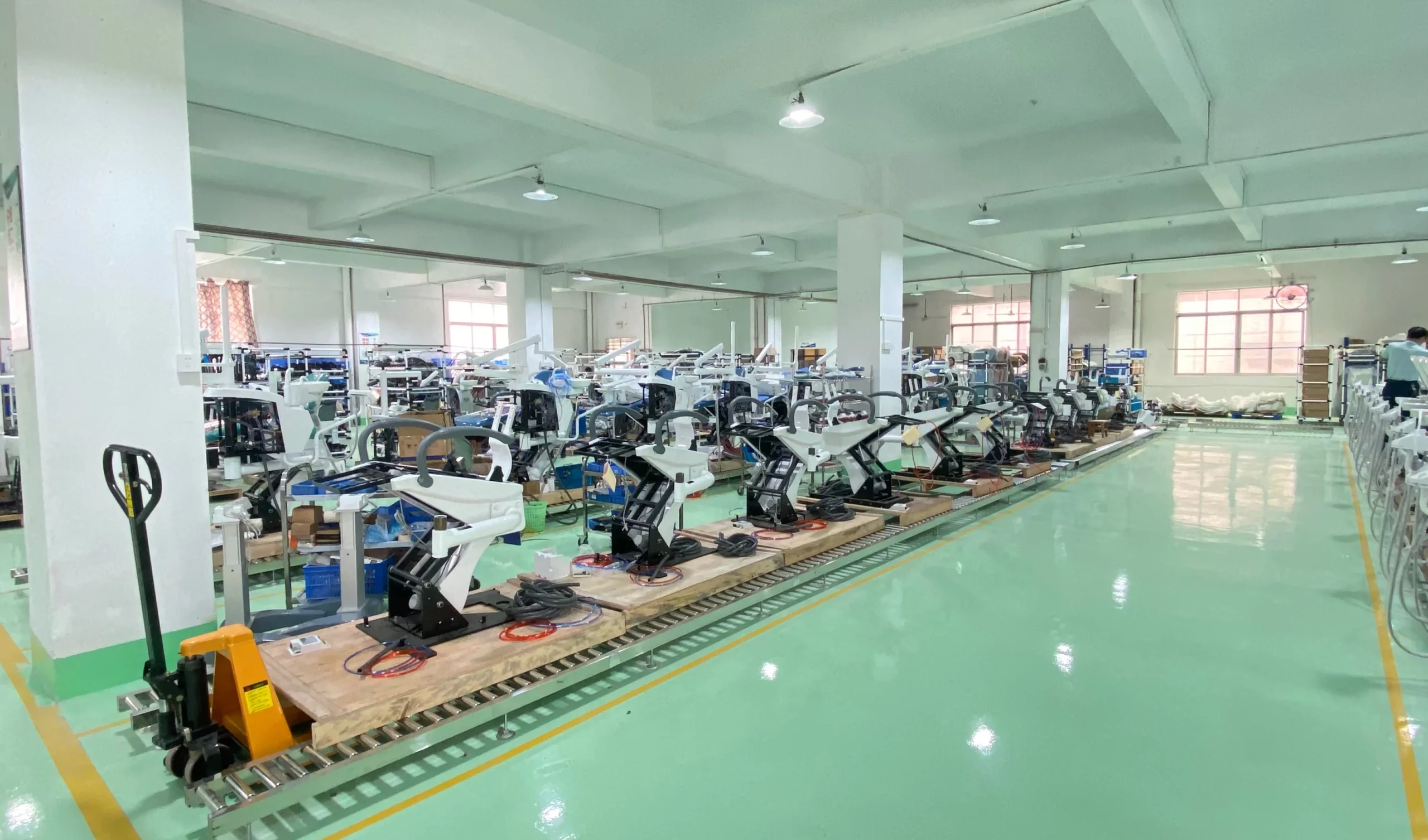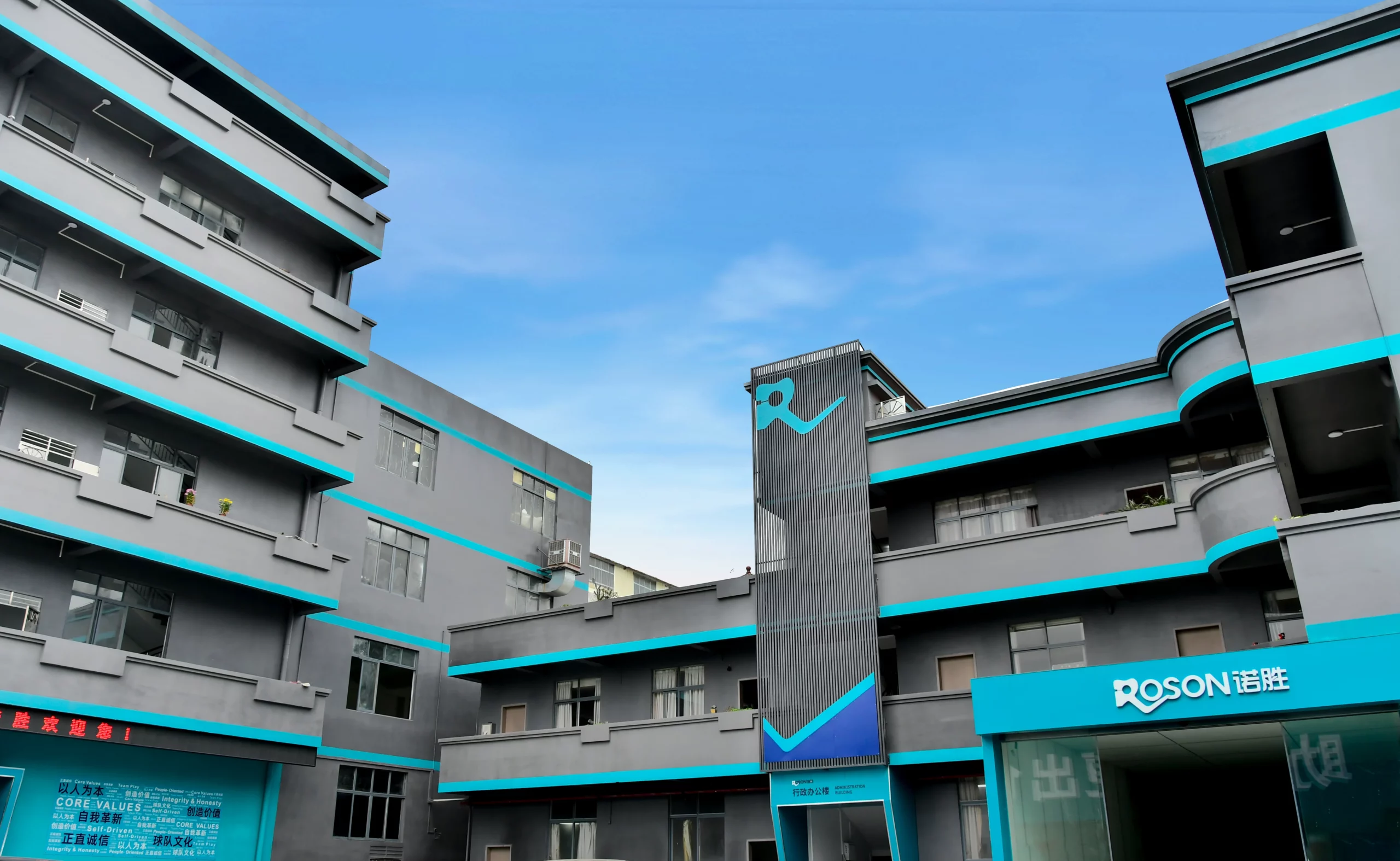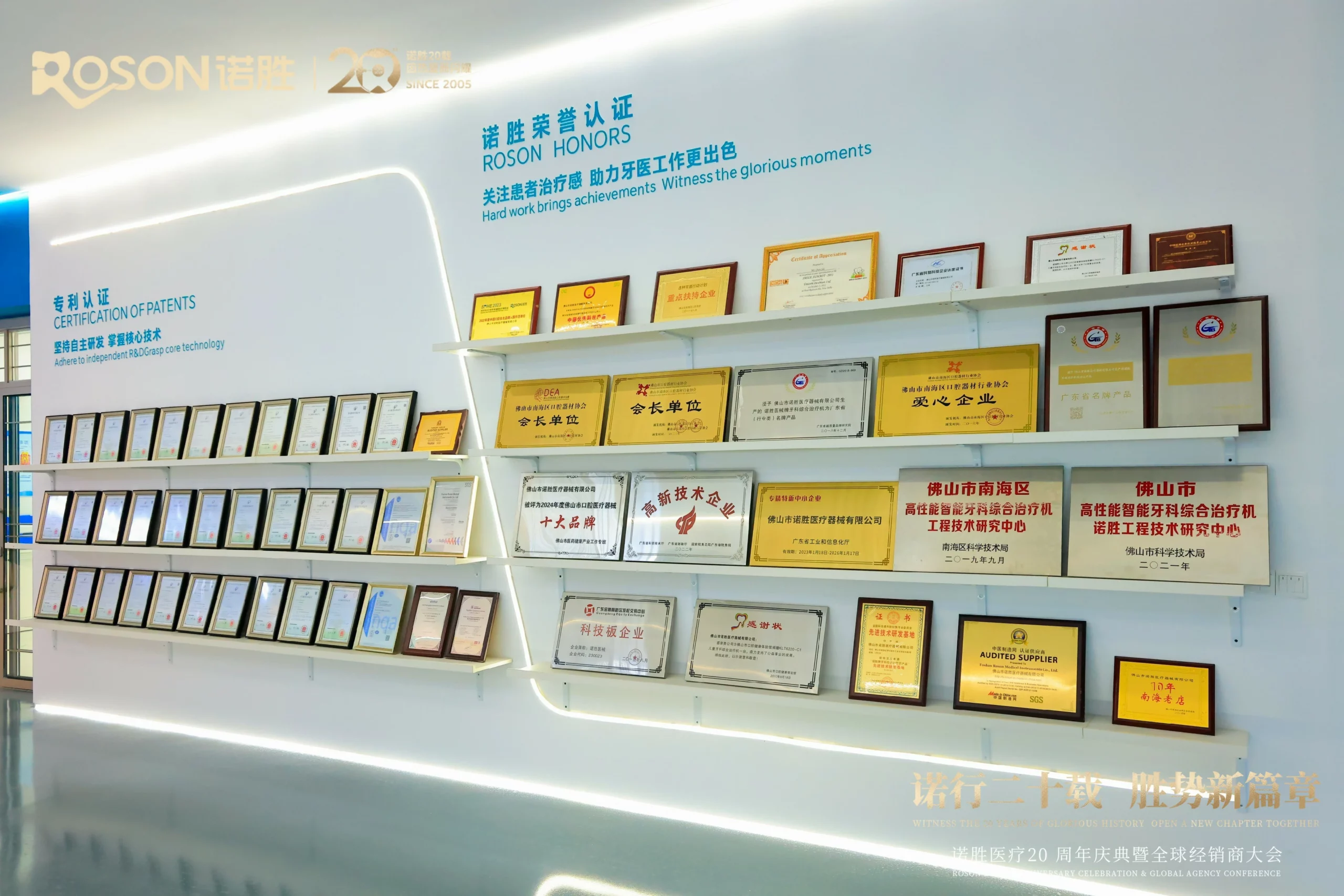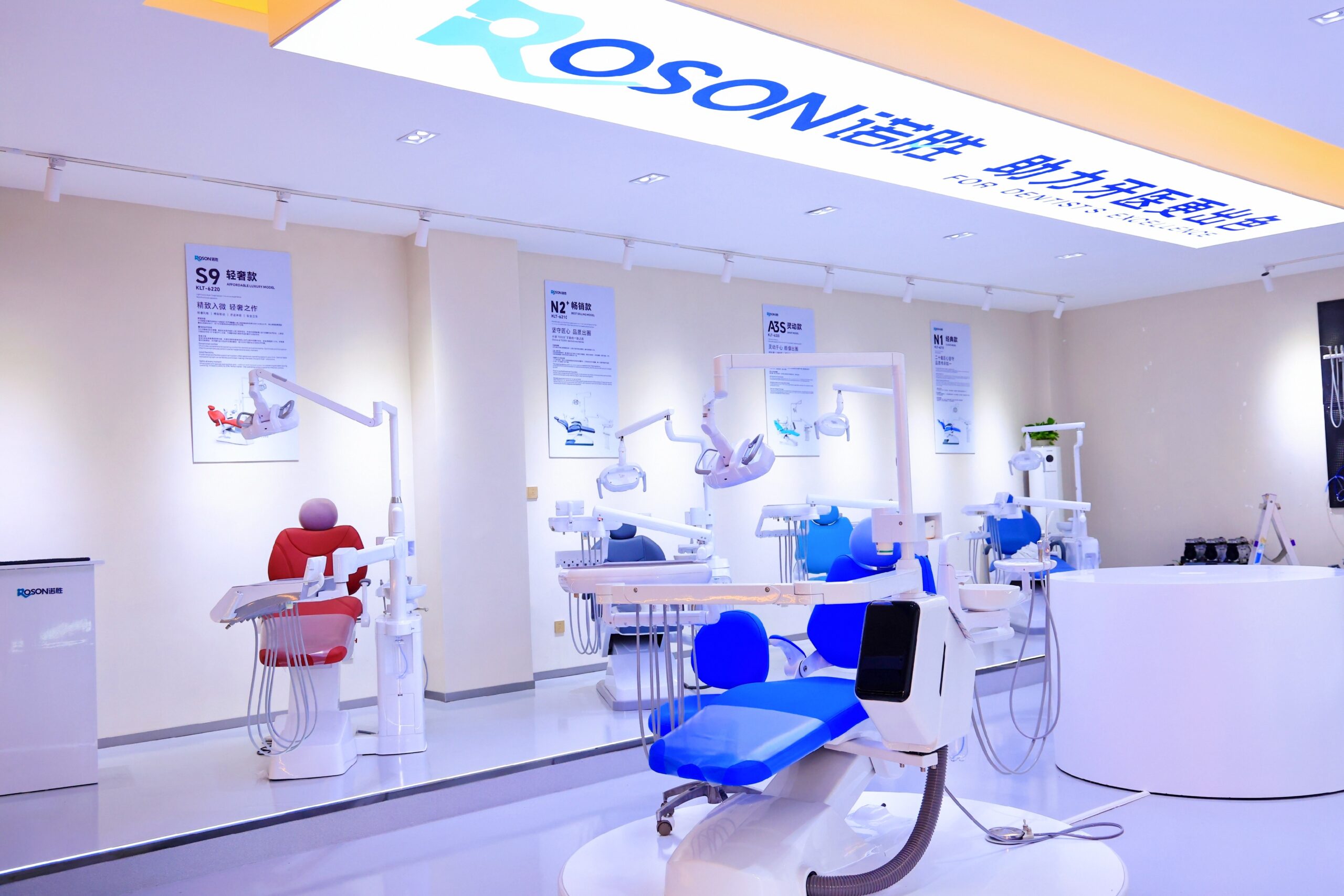If poor suction is starting to become an issue during dental procedures, it’s crucial to address it right away. A suction system in a dental chair is absolutely critical for a clean working field and for patient comfort and safety. If the system isn’t working properly, procedures may need to be delayed or complicated. The following is a step-by-step guide on how to diagnose and fix the issue before it escalates.
Step 1: The Operator Check – Is the Problem Right at Your Fingertips?
The first thing to do when you notice the suction is weak is to check if the issue is right in front of you. Most of the time, the problem is something minor. Check if the suction control switch or knob on the dental chair is properly set. Occasionally, the suctioning capability gets low merely because settings were inadvertently altered.
In addition, make sure the dental chair repair functions are working correctly. If the chair or the suction system has recently been serviced, the settings might have been changed or not reset correctly.
This step is simple and fast, and can save you time if the answer is just within reach.
An efficient suction system not only provides better visibility during procedures but also significantly reduces the risk of cross-infection in dental practices, which is crucial for maintaining the health of both patients and dental staff.
Step 2: The Visual Inspection – Identifying the Obvious Culprit
After you have confirmed that the settings are fine, it is now time to carry out a visual inspection of the dental chair suction system. Look for any visible issues such as blockages or kinks in the hose. Sometimes the hoses will bend or twist, and this will reduce the suction ability.
Next, check the water traps and connectors for clogs or leaks that are visible. Any obstructions in the airflow can significantly influence the suction power. Occasionally, debris or dental materials may accumulate in the system and lead to reduced performance.
Check if all the connections are tight and secure. Tighten whatever seems loose and check if the suction is improved.
Step 3: The Core Check – Unblocking the Clogged Filter
If there are no obvious issues noted during the visual inspection, it’s time to look at the internal components. The filter of the suction system can become blocked over time by debris, saliva, or other dental material.
Cleaning the filters is an excellent method for maintaining proper suction in your dental chair. Filters, depending on the model, will need to be either replaced or cleaned periodically. Check the manufacturer’s instructions for cleaning, and make sure to remove any obstructions that may be blocking the airflow.
If you don’t know how, attempt to use a dental chair cleaning solution that’s system-safe, as it will dissolve tough buildups without causing damage to the components.
Step 4: The Audio Diagnosis – What the Sounds Are Telling You
Sometimes the sound of the suction system can be very revealing about the issue. A normal, healthy suction system will make a consistent noise. If an abnormal noise is present, such as a high-pitched whistling, gurgling, or sputtering noise, then this can be an indication of a blockage, leak, or other issue affecting the airflow.
Listen carefully to the sound as you adjust the suction settings. Changes in sound can also determine where the problem is, whether in the filter, hose, or other parts of the system. This can direct you straight to the exact problem location, rendering repairs much quicker.Understanding these audio cues is part of creating an optimal dental environment, similar to how various sounds can impact patient comfort and anxiety levels in your practice.
Step 5: The Final Step – Knowing When to Stop and Call a Professional
If you’ve attempted all the above measures and the suction problem persists, it’s probably time to call in the expert. While some issues are simple to repair, others will require the services of a dental chair repair technician.
For example, if the internal mechanisms or motor of the suction system is damaged, attempting to fix it on your own can cause more harm than good. In this case, it’s best to call in a professional who has the ability to diagnose and repair the problem successfully.
A professional can also perform routine maintenance of your dental chair and suction system to prevent any issues in the future. Routine maintenance can keep your equipment in proper working condition and extend its lifespan.
Summary & Prevention: Preventing Weak Suction from Happening Again
Weak suction on a dentist’s chair can halt procedures and cause unnecessary delays, but with the right steps, it’s generally easy to correct. Start with the simple check of settings, followed by a visual inspection of hoses and connections. Filter cleaning is another important step, and don’t forget to listen for clues in the sound of the suction system.
To prevent problems in the future, use a dental chair cleaning solution on a regular basis to keep the suction system in prime condition. Good care and maintenance on a regular basis will provide proper suction for the life of the dental chair. As a final option, do not be afraid to call in a professional for a diagnosis and repair.
5 FAQs About Dental Chair Suction System Maintenance
Q1. How Often Do I Need to Clean the Suction Filter of My Dental Chair?
It should be part of your regular maintenance, usually every few months, to clean the suction filter. If your practice is under heavy use, though, it may require more frequent cleaning. A dental chair cleaning solution can be used to keep the filter clean without causing damage to the system. Cleaning regularly prevents clogging and allows for optimal suction.
Q2. What Do I Do if the Suction System Is Producing Abnormal Noises?
If you hear abnormal sounds like whistling or gurgling, check the filters or hoses for any blockages. These sounds typically indicate that something is obstructing the airflow. Refer to the guide to clean the system and check for loose connections. If the problem persists, you may need to hire the services of a dental chair repair expert.
Q3. Can I Utilize Regular Cleaning Products for My Dental Chair Suction System?
Do not use regular cleaning products on your dental chair suction system. They are too abrasive and can damage the components. Instead, use a dental chair cleaning solution, which is designed for the purpose. It will keep the system clean without exposing sensitive components to possible damage.
Q4. How Do I Prevent Suction Issues in the Future?
For suction issues to be avoided, there is a daily routine of cleaning your dental chair and suction system. Check the hoses for blockage or kinks, clean the filter daily, and use a cleaning product for dental chairs to remove buildup. Daily cleaning can help in maintaining the suction system at its optimal function.
Q5. When should I call a professional to fix the dental chair suction?
If you have inspected all the parts and the suction issue is still there, it’s time to call a professional. Problems such as motor failure or complicated blockages need expert hands. Professional check-ups at regular intervals can also prevent bigger issues in the future.




